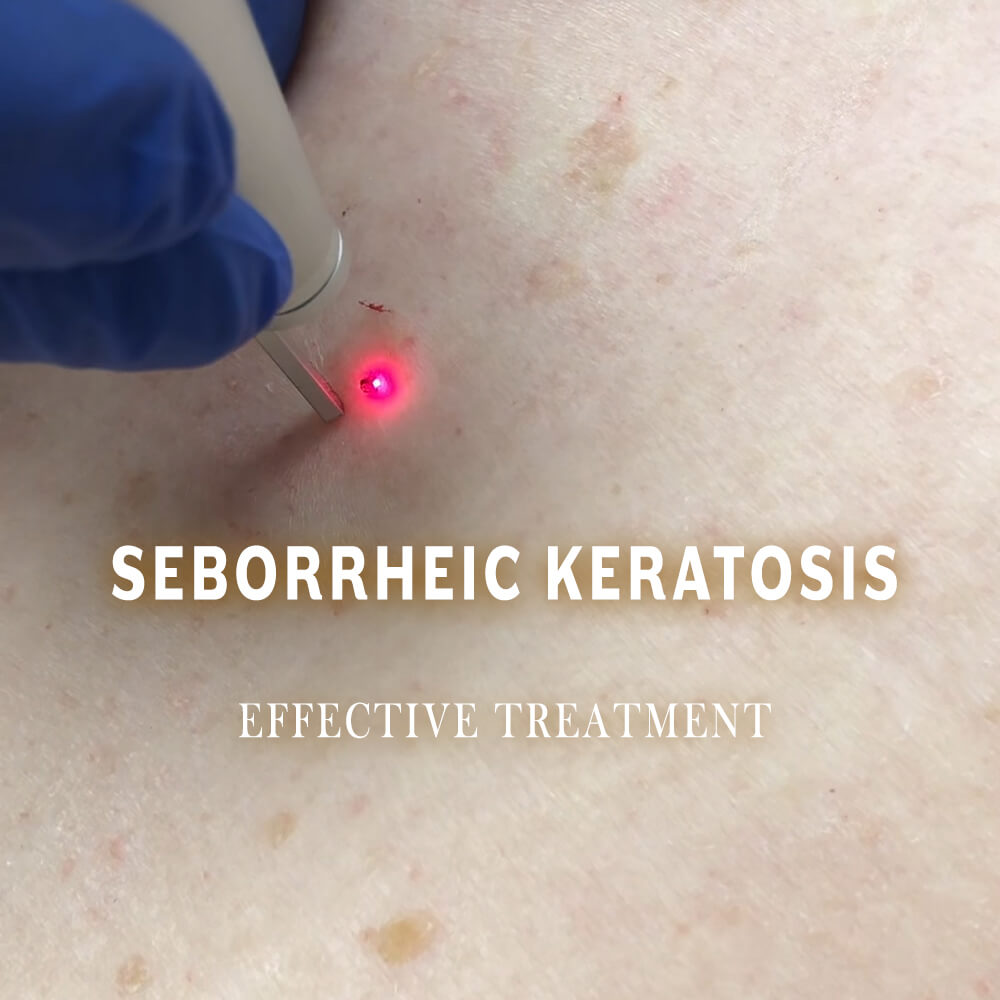SEBORRHEIC KERATOSIS – THE BEST CO2 LASER TREATMENT!
Seborrhoeic keratoses are often pigmented superficial epithelial lesions, usually verrucous, but which can sometimes take on a smooth papular appearance.
We present to you more complete material developed by our colleagues, in a specialized blog (In French only!):
“Seborrheic keratosis: definition, symptoms and location”, Julie Giorgetta, Health journalist, Published on 26/10/2022 à 19h57 , mis à jour le 26/10/2022 à 19h57.
https://www.doctissimo.fr/sante/maladies/maladies-de-la-peau/keratose-seborrheique-definition-symptomes-et-localisation/6ec200_ar.html
Seborrheic Keratosis: Definition, Symptoms, and Location
In collaboration with Dr. Marc Perrussel (venereologist dermatologist)
Seborrheic keratoses, or seborrheic warts, are benign pigmented lesions that appear with age. How can they be recognized? Where are they located? How can they be removed and treated? Answers and advice from Dr. Marc Perrussel, dermatologist and venereologist.
Definition: What is seborrheic keratosis?
Keratosis, meaning “thickening” and seborrheic “oily,” is a benign skin lesion characterized by a thickening of the skin’s surface layer. “Instead of being naturally eliminated, dead cells clump together and form growths: seborrheic keratoses.
These benign lesions are linked to skin aging and occur more frequently in healthy individuals who previously had oily skin. As they age, they lose the quality of their sebum, which promotes the development of this type of condition. In some cases, they may be the result of a genetic mutation,” explains Dr. Marc Perrussel, dermatologist and venereologist.
How can you recognize seborrheic keratosis? Seborrheic keratoses are small, single or multiple lesions that appear as ochre-brown scabs at first, then turn dark brown or even blackish over time. Initially rough, they then tend to thicken. “It’s strictly benign; you could even say it’s physiological and is one of the physiological signs of skin aging. In no case does it indicate the development of a cancerous tumor. Seborrheic keratoses are not contagious and are never a sign of infection,” the dermatologist reassures.
These seborrheic warts should not be confused with moles or seborrheic dermatitis, a chronic inflammatory skin disease that results in the appearance of red patches covered with white flakes on the face and scalp.
Where is seborrheic keratosis located?
Seborrheic keratoses can develop anywhere on the skin, but most commonly on so-called seborrheic areas: the face, chest, and back.
What is the diagnosis?
Diagnosis is based on a complete clinical examination of the skin with the naked eye or a dermatoscope. The dermatologist then scrapes the skin with a small tongue depressor: the skin peels off and falls off in small, oily scales. The dermatologist will ensure that the seborrheic keratosis is not associated with a cancerous condition that the patient has not detected and that would require treatment.
When and who should you consult?
“Seborrheic keratosis does not warrant an emergency consultation. First, consult your primary care physician, who can confirm or rule out the diagnosis. If in doubt, they will refer you to a dermatologist who will perform a complete skin diagnosis and reassure you that this type of lesion is benign,” says the specialist.
Treatments: How to treat and remove seborrheic keratosis?
Treatment of seborrheic keratosis is not covered by health insurance because it falls under the umbrella of so-called “comfort” conditions, just like skin tags or wrinkle treatments. “Sometimes, seborrheic keratosis can become inflamed, which can potentially be treated, but uniquely, not all seborrheic warts that become inflamed will be treated. The treatment then relies on curettage, which consists of removing the crust using a sterilized scalpel. The lesion can also be burned with nitrogen,” our expert informs.
If there is any doubt about a potentially precancerous lesion, the keratosis can be surgically removed and then sent to anatomopathology for analysis. To try to remove seborrheic keratoses naturally, Dr. Marc Perrussel recommends using a horsehair glove in the shower; this action will have a mechanical peeling effect. He also recommends applying fruit acid-based products that will smooth the skin and reduce the number of seborrheic keratoses forming, or applying ISO-UREA MD smoothing milk from La Roche Posay, which eliminates skin scales, accelerates cell renewal, and restores smooth skin.
To schedule an appointment with our specialists:
Labelle Medical and Aesthetic Clinic
Cell: 514-516-6624 / Tel: 514-933-7014
contact@cliniquecurelabelle.ca
www.cliniquecurelabelle.ca
400 Bd du Curé-Labelle, Laval, QC H7V 2S7 (suite 302)

